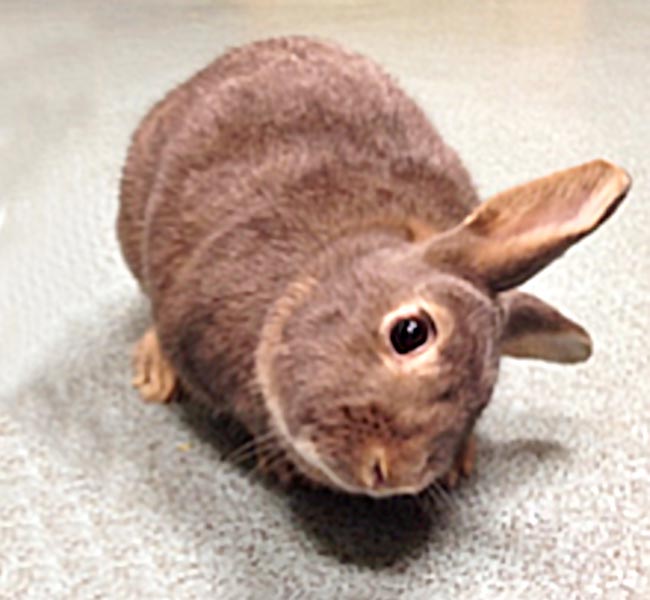24 Apr 2017


An 11-month-old neutered male lop-eared rabbit was brought to consult for head tilt and loss of balance.
The rabbit was conscious, but stressed. Its head was tilted to the left, and stimuli caused it to roll and spin left. Ventrolateral strabismus was present, with the right eye deviated dorsally and the left eye ventrally.
Vestibular syndrome in rabbits can be attributed to either central or peripheral vestibular disease.
Differential diagnoses for peripheral vestibular syndrome include bacterial otitis media and interna, aminoglycoside intoxication, trauma, and idiopathic vestibular syndrome.
Central vestibular syndrome has several potential origins, the most common being infectious agents. These include bacteria such as Pasteurella multocida, parasites such as Encephalitozoon cuniculi and Toxoplasma gondii, viruses such as herpesvirus, and fungi.
A detailed history and thorough neurological examination are essential when establishing the vestibular syndrome’s origin.
Diagnostic investigation will include serum haematology and biochemistry, serology IgM and IgG testing for E cuniculi, and x-rays for assessment of tympanic bulla and possible respiratory disease. A CT scan is the examination of choice for a full assessment of tympanic bulla, while an MRI will be preferred if brain lesions are suspected.
In the studied case, the CT scan showed extensive bilateral otitis media and interna, as well as sinus infection.
Medical management and supportive care should be provided prior to achieving a diagnosis. This will be aimed towards treating the balance disorder and associated anxiety, by administrating midazolam, and protecting the patient from possible complications – for example, by placing the patient in a narrow, padded cage to prevent head or eye trauma due to rolling.
Supportive care will include fluid therapy and assisted feeding. Additionally, administration of prochlorperazine is thought to reduce discomfort and nauseous sensation.
An aetiologic treatment can be started without a precise diagnosis. It will be focused on fighting potential infectious agents (enrofloxacin is a good choice as it is well-tolerated by rabbits, has a good cerebral diffusion and is active against P multocida) and limiting inflammatory reactions with a nonsteroidal drug. Medical treatment can be needed for several weeks before improvement of clinical signs.
In cases of otitis media, surgical intervention may be necessary, and will consist of total ear canal ablation and bulla osteotomy.
Reviewed by Molly Varga BVetMed, CertZooMed, DZooMed(Mammalian), MRCVS.